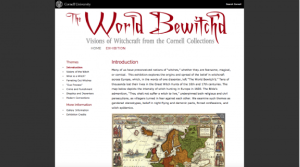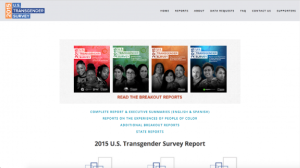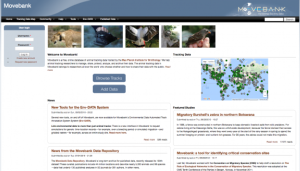General Interest
Back to Top
|
 |
|
National Geographic: Where we live, block by block
|
Social studies |
|
As part of their "Diversity in America" series, National Geographic has created this fascinating interactive map (viewable for free after entering an email address) depicting where America's different races live and at what concentration. Readers can search for any US city via the map's search box or use the zoom tools in the bottom right to see their area of interest, while a helpful legend explains what the different colors signify. Some of the map's most interesting features are pointed out in the Regions worth exploring menu. Here, various patterns of diversity and development history are highlighted in Los Angeles, Houston, Chicago, New York City, and Washington, DC. This section also spotlights locations where different aspects of American history can be seen reflected in its demographics, such as legacies of sharecropping in Virginia. This map was created for National Geographic by Matthew W. Chwastyk, Kennedy Elliott, and Ryan Morris. In their words, "mapping [America's] diversity reveals not just a snapshot of today but the imprint of two and a half centuries of migration, conflict, and prosperity." [JDC] |
|





|
|
 |
|
 |
|
Understood
|
Educational Technology |
|
From the National Center for Learning Disabilities (NCLD) comes Understood, a resource created "to help the millions of parents whose children, ages 3-20, are struggling with learning and attention issues." Here, interested readers will find a large collection of information available in both English and Spanish and organized intuitively into categories such as School & Learning, Friends & Feelings, and You & Your Family. The Your Parent Toolkit offers resources specifically designed to "empower [parents] to understand their children's issues and relate to their experiences." For example, Through Your Child's Eyes offers simulations and videos to help viewers understand the experiences of someone with learning or attention issues, while the Tech Finder offers a search tool for "expert-approved apps and games" as well as information on other assistive software and technology. Operated and managed by the NCLD, Understood was founded in collaboration between fifteen nonprofit organizations, such as the Children's Health Council, the Child Mind Institute, and the Learning Disabilities Association of America. [JDC] |
|





|
|
 |
|
The World Bewitch'd: Visions of Witchcraft from the Cornell Collections
|
Social studies |
|
From the Cornell University Library comes The World Bewitch'd, "an exhibition exploring the origins and spread of the belief in witchcraft across Europe." This exhibition "examine[s] such themes as gendered stereotypes, belief in night flying and demonic pacts, forced confessions, and witch epidemics." Here, interested readers can learn about the historical contexts and conceptions of witchcraft, as well as get an overview of the persecution accused witches faced and see how this cultural history plays into modern portrayals. The exhibition incorporates material dating back to the fifteenth century from the Cornell Witchcraft Collection, the largest of its kind in North America, as well as images and video clips from more recent pop culture examples. The online exhibition The World Bewitch'd was created to complement a physical exhibition by the same name, which was on display in Cornell's Hirschland Exhibition Gallery from October 31, 2017, until August 31, 2018. It was curated by Cornell University librarians Anne Kenney and Kornelia Tancheva. [JDC] |
|





|
|
 |
|
Aboriginal & Torres Strait Islander Art
|
Arts |
|
Located in Canberra, the National Gallery of Australia (NGA) serves as Australia's "national cultural institution for the visual arts." Among its holdings is its collection of Aboriginal & Torres Strait Islander art, which, at over 7,500 works, is the largest such collection in the world. Here, readers can browse numerous examples from this diverse collection of contemporary and historical indigenous art, grouped into thematic and regional categories such as nineteenth-century objects, early Western Desert paintings 1971-1974, textiles, and photo media. A particularly notable artwork to explore is The Aboriginal Memorial, an installation created in 1987-1988 by 43 Aboriginal artists, which consists of 200 decorated hollow log coffins. Multiple images of each individual log can be viewed here, and interested visitors can also follow a link to a mini-site for the exhibit for a more detailed explanation. Another collection highlighted here is the Hermannsburg School, featuring artwork by Albert Namatjira, who was "the first Aboriginal artist to be recognised within a wider Western art tradition." [JDC] |
|





|
|
 |
|
Stuff to Blow Your Mind
|
Science |
|
Stuff to Blow Your Mind is a science podcast from How Stuff Works that "examines neurological quandaries, cosmic mysteries, evolutionary marvels, and the technological underpinnings of our transhuman future." Episodes typically run an hour or so in length and focus on one of a wide-ranging variety of topics, which site visitors can browse via the lengthy list on the left. While this podcast's focus is primarily scientific, it also explores relevant cultural and historical aspects, such as in their two-part episode "Age of the Earth," published on September 18 and 20, 2018. Other recent episodes include "Jenny Greenteeth: Horror at the Water's Edge," in which they examine "old tales of aquatic terror, their instructional nature, and the real-world predators who swim the shores in search of terrestrial prey," and "Salamander Talk with Mark Mandica," a chat with the executive director of The Amphibian Foundation. Stuff to Blow Your Mind was co-created in 2010 by Robert Lamb and Alison Loudermilk and is currently hosted by Lamb and Joe McCormick. Interested readers can listen through their web browsers or subscribe via Spotify, Stitcher, or other podcast platforms. [JDC] |
|





|
|
 |
|
2015 US Transgender Survey Report
|
Social studies |
|
In the summer of 2015, the National Center for Transgender Equality (NCTE) conducted the US Transgender Survey (USTS), "the largest survey ever devoted to the lives and experiences of transgender people, with 27,715 respondents across the United States." Here, interested readers will find the complete 302-page report and a 16-page executive summary of that survey, which are available in both English and Spanish. The USTS also produced a number of breakout reports on the experiences of transgender people of color, with separate reports for Black, Latino/a (also available in Spanish), American Indian and Alaskan Native, and Asian, Native Hawaiian, and Pacific Islander respondents. Additionally, readers may download brief individual reports specific to 43 US states, as well as a short report on survey respondents in the military and one on bisexual transgender people (created in partnership with the Movement Advancement Project). Those interested in the methodology and questionnaire used in the USTS will find these details in the complete report. The 2015 USTS was conducted under the direction of NCTE Research Director Sandy James and was co-authored by NCTE Policy Counsel Ma'ayan Anafi. [JDC] |
|





|
|


















